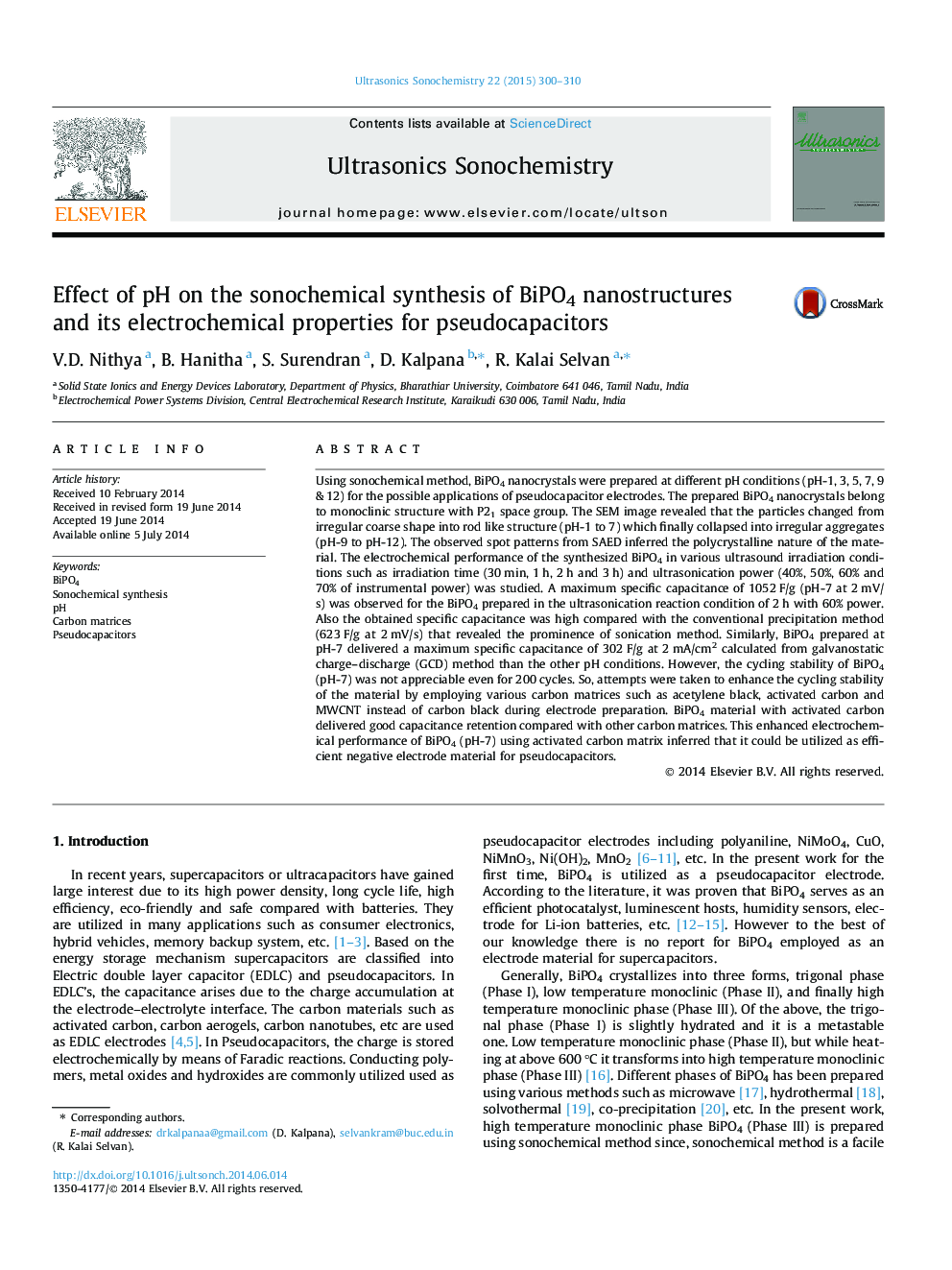| Article ID | Journal | Published Year | Pages | File Type |
|---|---|---|---|---|
| 1269650 | Ultrasonics Sonochemistry | 2015 | 11 Pages |
•BiPO4 synthesized by sonochemical method for supercapacitor applications.•Effect of pH on the structural, morphological and capacitive behavior is studied.•Different carbon matrices are used to improve the cycling stability.•Maximum specific capacitance of 1052 F/g at 2 mV/s is obtained.
Using sonochemical method, BiPO4 nanocrystals were prepared at different pH conditions (pH-1, 3, 5, 7, 9 & 12) for the possible applications of pseudocapacitor electrodes. The prepared BiPO4 nanocrystals belong to monoclinic structure with P21 space group. The SEM image revealed that the particles changed from irregular coarse shape into rod like structure (pH-1 to 7) which finally collapsed into irregular aggregates (pH-9 to pH-12). The observed spot patterns from SAED inferred the polycrystalline nature of the material. The electrochemical performance of the synthesized BiPO4 in various ultrasound irradiation conditions such as irradiation time (30 min, 1 h, 2 h and 3 h) and ultrasonication power (40%, 50%, 60% and 70% of instrumental power) was studied. A maximum specific capacitance of 1052 F/g (pH-7 at 2 mV/s) was observed for the BiPO4 prepared in the ultrasonication reaction condition of 2 h with 60% power. Also the obtained specific capacitance was high compared with the conventional precipitation method (623 F/g at 2 mV/s) that revealed the prominence of sonication method. Similarly, BiPO4 prepared at pH-7 delivered a maximum specific capacitance of 302 F/g at 2 mA/cm2 calculated from galvanostatic charge–discharge (GCD) method than the other pH conditions. However, the cycling stability of BiPO4 (pH-7) was not appreciable even for 200 cycles. So, attempts were taken to enhance the cycling stability of the material by employing various carbon matrices such as acetylene black, activated carbon and MWCNT instead of carbon black during electrode preparation. BiPO4 material with activated carbon delivered good capacitance retention compared with other carbon matrices. This enhanced electrochemical performance of BiPO4 (pH-7) using activated carbon matrix inferred that it could be utilized as efficient negative electrode material for pseudocapacitors.
